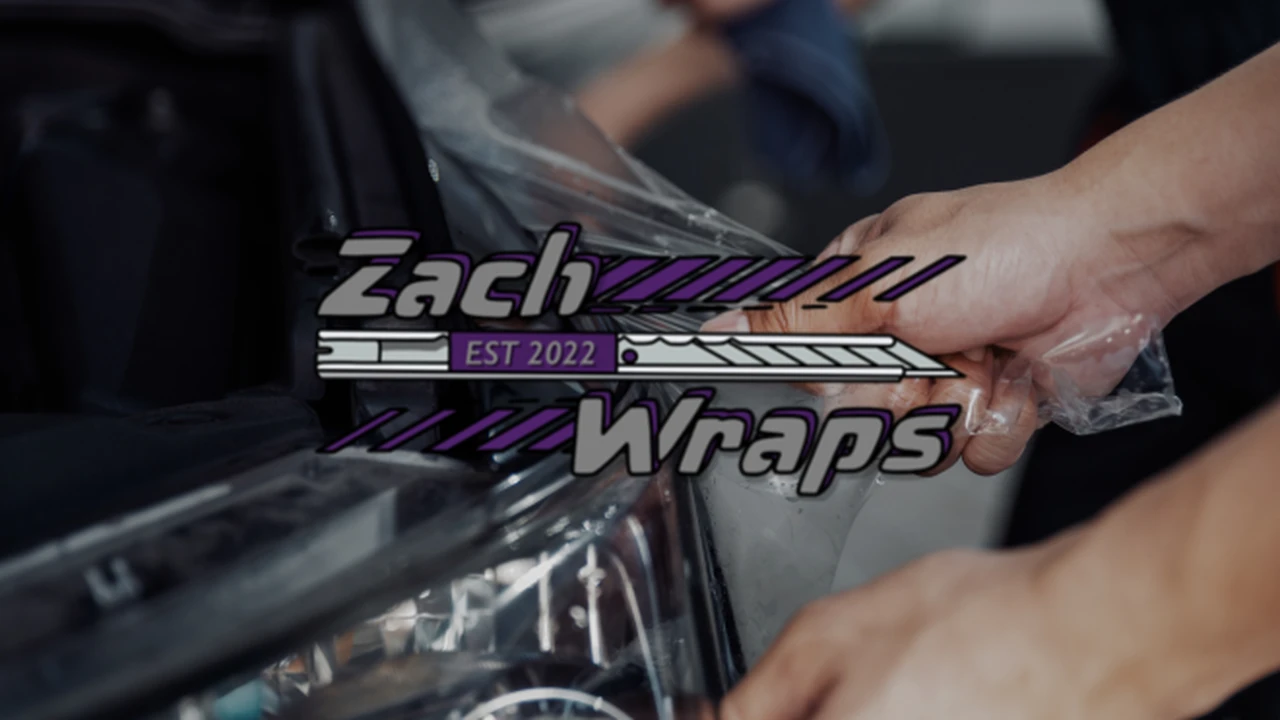Car Wrap Removal: A Step-by-Step Guide
Learn how to safely remove a car wrap without damaging your paint. This guide provides step-by-step instructions and tips. Restore your car's original look with a professional wrap removal.

Why Remove a Car Wrap Professional vs DIY Car Wrap Removal
So, you've got a car wrap. Maybe it's faded, peeling, or you're just ready for a new look. Whatever the reason, removing a car wrap can seem daunting. Should you tackle it yourself, or leave it to the pros? Let's break it down.
Professional removal definitely has its perks. They've got the experience, the tools, and the know-how to get the job done quickly and efficiently. Plus, they're insured, so if anything goes wrong, you're covered. The downside? It can be pricey, ranging from $500 to $1500 depending on the size of your car and the complexity of the wrap.
DIY removal, on the other hand, is much cheaper. You'll only need to pay for a few tools and supplies. But it's also more time-consuming and requires a lot of patience. And if you're not careful, you could damage your car's paint. So, which is right for you? If you're on a tight budget and have plenty of time, DIY might be the way to go. But if you value your time and want to ensure a flawless removal, professional removal is the better option.
Tools and Materials Needed for DIY Vinyl Car Wrap Removal
Alright, so you've decided to go the DIY route. Awesome! Here's what you'll need:
- Heat Gun or Hair Dryer: This is crucial for softening the adhesive. A heat gun is faster and more effective, but a hair dryer will work in a pinch.
- Plastic Razor Blades or a Plastic Scraper: Metal blades can scratch your paint, so stick with plastic.
- Spray Bottle with Soapy Water: This helps lubricate the surface and makes it easier to peel off the wrap. Use mild dish soap.
- Microfiber Towels: For cleaning and wiping down the surface.
- Adhesive Remover: To remove any stubborn residue left behind by the wrap. Goo Gone Automotive is a popular choice.
- Gloves: To protect your hands from the heat and chemicals.
- Optional: A helper! Having someone to assist you can make the job go much faster.
You can find most of these items at your local auto parts store or online. Don't skimp on quality – cheap tools can make the job much harder and increase the risk of damage.
Step By Step Guide to Safely Removing Car Wraps
Okay, let's get down to business. Here's a step-by-step guide to safely removing your car wrap:
- Prepare Your Car: Wash your car thoroughly to remove any dirt or debris. This will prevent scratches during the removal process. Park your car in a shaded area, as direct sunlight can make the adhesive harder to remove.
- Apply Heat: Using your heat gun or hair dryer, apply heat to a small section of the wrap. Move the heat source back and forth to avoid overheating the vinyl. The goal is to soften the adhesive, not melt the wrap.
- Peel the Wrap: Once the vinyl is warm and pliable, use your fingers or a plastic razor blade to gently peel it away from the car's surface. Start at an edge or corner and work your way slowly. Pull the wrap at a low angle (around 45 degrees) to minimize the risk of tearing.
- Spray Soapy Water: As you peel the wrap, spray soapy water between the vinyl and the car's surface. This will help lubricate the area and make it easier to remove the wrap.
- Remove Adhesive Residue: After you've removed the wrap, you'll likely have some adhesive residue left behind. Spray the residue with adhesive remover and let it sit for a few minutes. Then, use a microfiber towel to wipe it away. You may need to repeat this process several times to remove all the residue.
- Clean and Polish: Once all the adhesive is gone, wash your car again to remove any remaining residue. Then, apply a coat of wax or sealant to protect your paint.
Remember, patience is key. Don't rush the process, and don't force the wrap if it's not coming off easily. If you encounter any stubborn areas, apply more heat and soapy water.
Tips for Removing Difficult Car Wraps
Sometimes, car wrap removal isn't as straightforward as the guide above makes it seem. Here are a few tips for dealing with particularly difficult wraps:
- Older Wraps: Older wraps tend to be more brittle and prone to tearing. Apply more heat and work slowly and carefully.
- Wraps with Complex Designs: Wraps with intricate designs or multiple layers can be challenging to remove. Pay close attention to the edges and seams, and use a plastic razor blade to carefully separate the layers.
- Wraps Applied to Repainted Surfaces: If your car has been repainted, the wrap may be more difficult to remove, as the adhesive can bond more strongly to the new paint. Test a small area first to ensure that the removal process won't damage the paint.
- Cold Weather: Cold weather can make the wrap more brittle and difficult to remove. Work in a warm garage or wait for a warmer day.
If you're struggling to remove the wrap, don't hesitate to seek professional help. It's better to pay a professional than to risk damaging your car's paint.
Best Adhesive Removers for Car Wraps Product Recommendations
Choosing the right adhesive remover is crucial for removing stubborn residue without damaging your car's paint. Here are a few of our top picks:
- Goo Gone Automotive: This is a popular and effective adhesive remover that's specifically designed for automotive use. It's safe for most surfaces and removes a wide range of adhesives. You can find it at most auto parts stores for around $10-$15.
- 3M Adhesive Remover: 3M is a trusted brand in the automotive industry, and their adhesive remover is no exception. It's a powerful solvent that quickly dissolves adhesive residue. However, it's also more aggressive than Goo Gone, so use it with caution on delicate surfaces. Expect to pay around $15-$20.
- Rapid Remover: This is a professional-grade adhesive remover that's designed for removing vinyl wraps and graphics. It's fast-acting and effective, but it's also more expensive than other options. A gallon can cost around $50-$60.
- WD-40: Believe it or not, WD-40 can also be used to remove adhesive residue. It's not as effective as dedicated adhesive removers, but it's a good option if you're on a budget. Plus, you probably already have a can in your garage.
When using any adhesive remover, always test it on a small, inconspicuous area first to ensure that it doesn't damage the paint. Follow the manufacturer's instructions carefully, and wear gloves to protect your hands.
Heat Gun vs Hair Dryer for Car Wrap Removal A Comparison
The heat source is critical for softening the adhesive. But which is better: a heat gun or a hair dryer?
Heat Gun:
- Pros: Heats up much faster, more powerful, more efficient for large areas.
- Cons: Can easily overheat and damage the wrap or paint if not used carefully, more expensive.
- Best for: Experienced DIYers or professionals who need to remove wraps quickly and efficiently.
Hair Dryer:
- Pros: Less likely to overheat and damage the wrap or paint, cheaper and more readily available.
- Cons: Takes longer to heat up, less powerful, less efficient for large areas.
- Best for: Beginners or those removing small sections of wrap at a time.
If you're new to car wrap removal, a hair dryer is the safer option. But if you're experienced and want to speed up the process, a heat gun is the way to go. Just be sure to use it with caution and keep it moving to avoid overheating.
Avoiding Paint Damage During Car Wrap Removal Common Mistakes
The biggest concern when removing a car wrap is damaging the paint. Here are some common mistakes to avoid:
- Using Metal Blades: Metal blades can easily scratch your paint. Always use plastic razor blades or a plastic scraper.
- Overheating the Wrap: Applying too much heat can melt the wrap and damage the paint underneath. Keep the heat source moving and avoid holding it in one spot for too long.
- Pulling Too Hard: Forcing the wrap can tear it and leave behind adhesive residue. It can also damage the paint if the adhesive is strongly bonded.
- Using Harsh Chemicals: Some cleaning products can damage your car's paint. Stick with mild dish soap and automotive-specific adhesive removers.
- Rushing the Process: Patience is key. Rushing the removal process increases the risk of mistakes and damage.
By avoiding these common mistakes, you can minimize the risk of damaging your car's paint and ensure a successful wrap removal.
Disposing of Old Car Wraps Environmentally Friendly Options
Once you've removed your car wrap, you'll need to dispose of it properly. Vinyl wraps are not biodegradable, so it's important to recycle them whenever possible. Here are a few options:
- Recycling Programs: Some recycling centers accept vinyl wraps. Contact your local recycling center to see if they offer this service.
- Vinyl Wrap Recycling Companies: There are companies that specialize in recycling vinyl wraps. They'll often pick up the wraps from your location.
- Repurposing: Get creative and repurpose the old wrap into something new. You can use it to make banners, signs, or even art projects.
Avoid simply throwing the wrap in the trash. By recycling or repurposing it, you can help reduce waste and protect the environment.
Cost of Professional Car Wrap Removal What to Expect
If you decide to go the professional route, here's what you can expect to pay:
- Small Car (e.g., compact car, sedan): $500 - $800
- Medium Car (e.g., SUV, truck): $800 - $1200
- Large Car (e.g., large SUV, van): $1200 - $1500+
These are just estimates, and the actual cost can vary depending on the complexity of the wrap, the age of the wrap, and the location of the shop. Be sure to get a quote from several shops before making a decision.
While professional removal is more expensive than DIY, it can save you time, effort, and the risk of damaging your car's paint. If you're not comfortable tackling the job yourself, it's worth the investment.
:max_bytes(150000):strip_icc()/277019-baked-pork-chops-with-cream-of-mushroom-soup-DDMFS-beauty-4x3-BG-7505-5762b731cf30447d9cbbbbbf387beafa.jpg)






